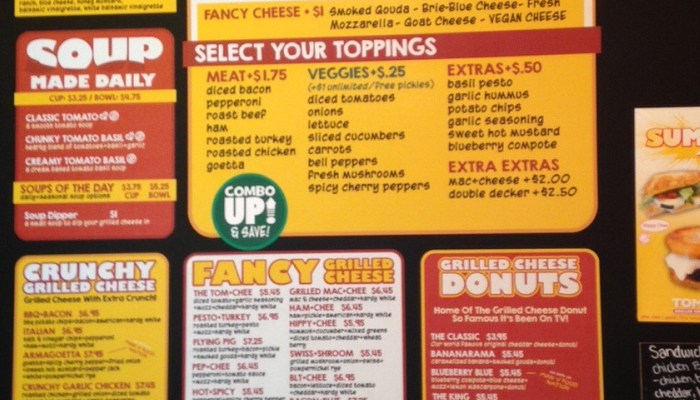 We’ve all experienced walking into a fast food restaurant and being faced with myriad choices.
We’ve all experienced walking into a fast food restaurant and being faced with myriad choices.
“What can I get you?” the employee behind the counter asks.
“Ummmm…” You stare at the menu trying to make sense of an overwhelming number of options. Suddenly you’re aware of the line behind you and the impatient person in front of you. You can’t help but freeze up. “I don’t know. What’s good here?” you say, finally.
The choice paradox
People appreciate multiple options because it gives them the power to choose. Logically then, more selections should make people happier.
That’s partly true. Studies show that people prefer an extensive list of alternatives but quickly become demotivated when dealing with them.[1] In a consumer experiment involving chocolates, researchers presented students with either six, 30 or a single chocolate treat, and then surveyed them regarding their satisfaction. Students having the most choices were significantly happier with the decision process but reported greater difficulty and frustration making a choice. Conversely, students presented with fewer options stated greater satisfaction with their choices and made them in far less time.
Simplicity makes decisions more likely. In a similar experiment, twenty percent more people stopped by a table featuring 24 different jams vs. one displaying only six. But people were eight times more likely to buy a jam from the table displaying limited selections.
The lesson is clear. Offering many different options may initially be more attractive to customers, but when the time comes to making a decision, narrowing the possibilities increases the chances the customer will actually buy something. In the end they’ll be more satisfied, too.
Less is more
Some companies have learned this lesson, but many more have work to do. The consumer packaged goods industry experimented with choice in the late 1990’s and Procter & Gamble reduced the number of versions of its popular Head and Shoulders shampoo from 26 to 15, resulting in a 10% increase in sales.[2] Other companies have seen similar gains simplifying their product lines.
Many early stage businesses, however, miss the point. Anxious to sell anything to generate topline, they attempt to appeal to everyone. A “spray and pray” philosophy begets a dizzying array of products, features and pricing schemes. But as the science shows, the best of intentions produce the worst of results.
Having no alternatives, however, is worse than having too many. Customers bristle when they feel they have no choice at all, yet companies often require customers to follow one set of procedures designed to suit all needs. This is especially true after the sale. Operations typically takes over, pursuing higher efficiencies by standardizing and optimizing processes. Constrained by a singular approach, customers rail against the supplier’s bureaucracy.
Small, medium, or large?
The key to customer success is striking the right balance throughout the customer lifecycle. Providing just a few options at the right times allows customers to experience a sense of autonomy and control, satisfying them on both a rational (effective) and a emotional (affective) level. One of five critical moments in the customer experience, a well-designed Moment of Power goes beyond practicality to create a deep sense of safety and security that satisfies, builds trust and leads to greater retention and loyalty.
Segmentation and Pareto analysis are easy first steps. When companies sharpen their focus to address specific market segments instead of taking a shotgun approach, they make the tough and necessary decisions about which opportunities to chase and which to ignore. And when companies analyze their products, services and processes according to which few satisfy the vast majority of needs, they can shorten the list customers must contemplate.
Creating a better customer experience, then, is a choice companies must make. And like all good decisions, it’s one that comes from a limited set of options.
Did you enjoy this article? Subscribe to Excel-lens now and never miss another post.
Sources:
[1] Iyengar, S., and Lepper, M. (2000) When Choice is Demotivating: Can One Desire Too Much of a Good Thing? Journal of Personality and Social Psychology, Vol. 79, No. 6, 995-1006
[2] Osnos, E. (1997, September 27). Too many choices? Firms cut back on new products. Philadelphia Inquirer, Dl, D7.
